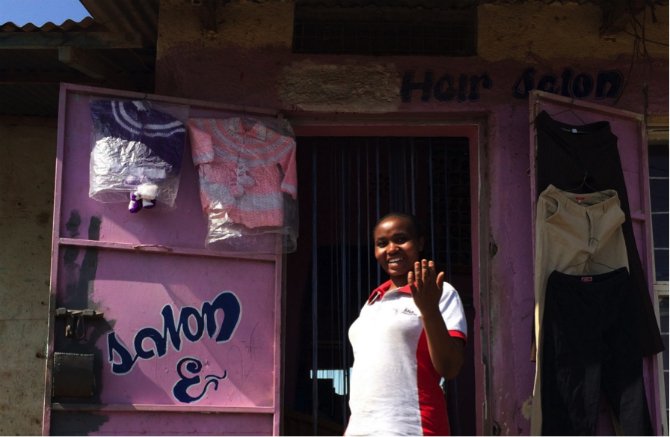Each day women who lack access to these resources spend 125 million hours collecting water for their families, and 266 million hours finding a place to relieve themselves.

Mysore, India - Through Water.org women in Mahahalli Village all have access to toilets and safe water at home. Now, these women spend their days farming the fields along the main road of their village. They grow marigolds, lavender, wheat and other crops to sell at market.
To collect all water they need for drinking, washing, cooking, cleaning – women walk miles, carry heavy vessels, wait for hours and often pay exorbitant prices. The work is all-consuming. Once they are old enough, girls join this effort.
Globally, 1 in 3 people lack access to a toilet. In many countries it is not acceptable for women to relieve themselves in the open during the day, so they wait for nightfall, just to have privacy. This impacts health and puts their safety at risk. About half of all girls worldwide attend schools without toilets. The lack of privacy causes many girls to drop out when they reach puberty.

Nairobi, Kenya - Ester rents rooms to a number of families in Kigiru Village. She has taken WaterCredit loans to get two large water tanks allowing her tenant families access to safe water as part of their rent.
For decades, the water and sanitation sector has approached water and sanitation access for the poor through raising money and disbursing it in the form of subsidies to cover the cost of wells and toilets. This charity-led approach is not sustainable or scalable at a level needed to confront the global water crisis.
For a large segment of the poor, charity dollars are not necessarily needed as much as access to finance. Water.org has found that women around the world have great potential to take hold of their family’s water and sanitation needs; when they get back the time once spent collecting water or looking for a safe place to go, they can attend school, work to earn incomes and ultimately fund their own solutions.

Tangerang, Indonesia - Neni took out a WaterCredit loan to install a toilet in her home. This has given her time to run her snack shop of which generates an income to repay her loan and provide for her family.
We believe that hundreds of millions of those lacking critical water and sanitation services can be reached by continuing to remove financial and other roadblocks, allowing them to move from unserved potential beneficiaries to empowered customers.

Nairobi, Kenya - Tabitha used to pay her neighbors $35-$70/mo to use their well, so she took out a WaterCredit loan that cost $40/mo to buy her own rainwater catchment system. She paid off the loan in one year, and now she puts her extra money towards her salon in Rongai.
Water.org is seeing great success in challenging the traditional charity model by empowering the poor to define their own futures. Through WaterCredit, the poor can finance the construction of their own solutions like a water tap or toilet. To date Water.org has served more than 3.3 million people through this approach. And of those served, more than 90% of the loans were borrowed by women who repaid them at a repayment rate of 99%.
To learn more about how Water.org is unlocking the potential of women around the world through lasting safe water and sanitation solutions, visit Water.org.
This article was written by Morée Scofield, photos contributed by Benjamin Heath and under copyright in support of Water.org.
The views expressed here are not necessarily those of each of the partners of Global Citizen.